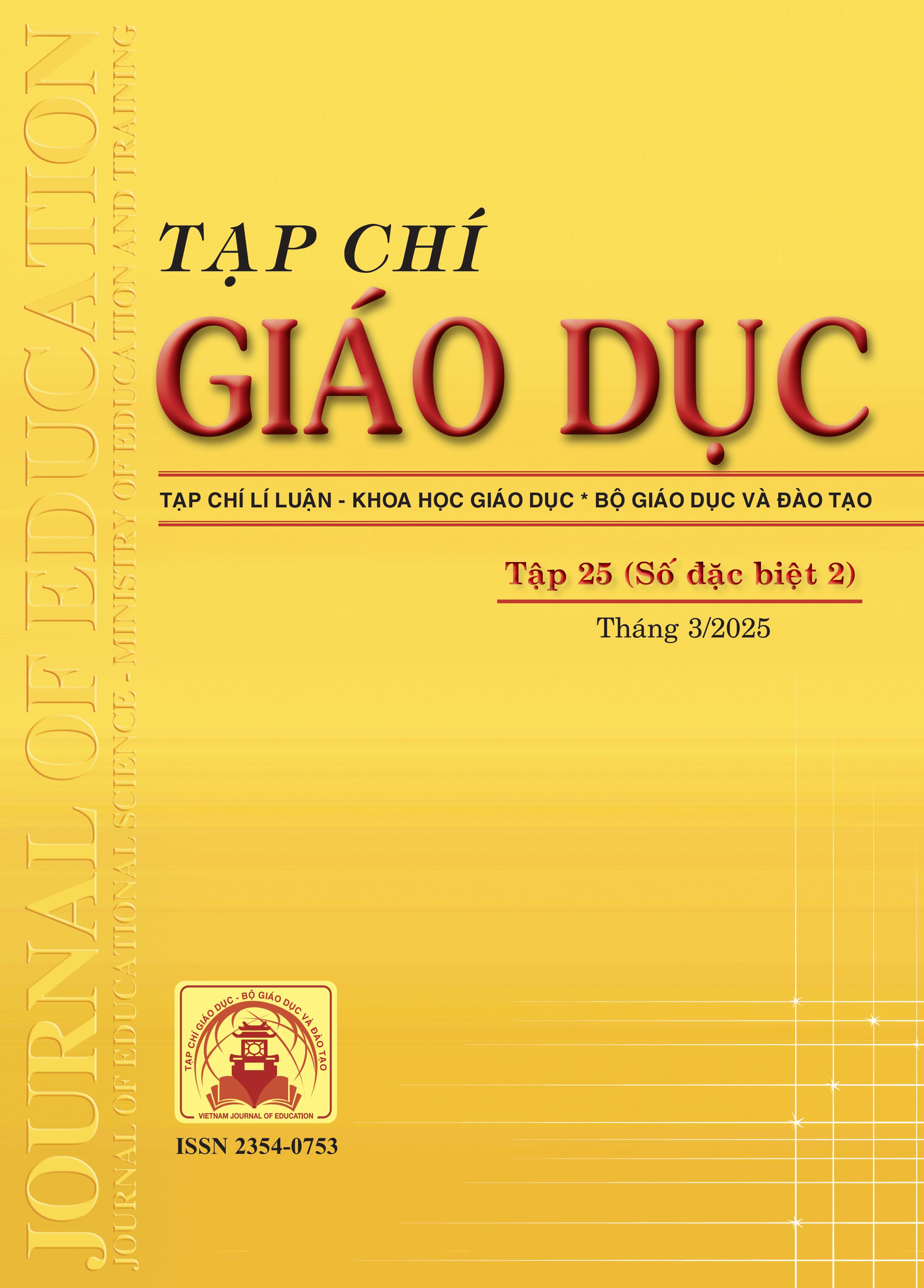Phát triển năng lực giải quyết vấn đề và sáng tạo cho học sinh trung học cơ sở thông qua mô hình dạy học tích hợp nội dung và ngôn ngữ
Tóm tắt
In the context of modern education, the 2018 General Education Program emphasizes the development of problem-solving and creativity, especially through integrated teaching methods. The CLIL (Content and Language Integrated Learning) teaching model is applied to combine subject content and develop language skills while meeting the requirements of global citizenship education and Decision 2080/QD-TTg on enhancing integrated foreign language teaching. The study was conducted in class 8A1, Quang Trung Secondary School, Da Lat City, to evaluate the impact of CLIL on students' problem-solving and creativity. The experimental results showed that this ability improved significantly, with a statistically significant difference (p < 0.05). Students not only acquired knowledge but also practiced critical thinking, group cooperation and communication skills in practical contexts. However, to effectively apply CLIL, it is necessary to train teachers with skills in designing integrated lessons while supporting students to develop a solid language foundation. This is a potential direction for modern integrated education but also requires long-term investment in policies and resources.
Tài liệu tham khảo
Adijaya, M. A. (2023). Implementation of Content and Language Integrated Learning (CLIL) in Teaching English for Guiding. Journal of Lesson and Learning Studies, 6(1), 1-8.
Anderson, L. W., & Krathwohl, D. R. (2001). A taxonomy for learning, teaching, and assessing: A revision of Bloom's taxonomy of educational objectives: complete edition. Addison Wesley Longman, Inc.
Ball, P., Kelly, K., & Clegg, J. (2015). Putting CLIL into practice. Oxford, UK: Oxford University Press.
Bộ GD-ĐT (2018). Chương trình giáo dục phổ thông - Chương trình tổng thể (ban hành kèm theo Thông tư số 32/2018/TT-BGDĐT ngày 26/12/2018 của Bộ trưởng Bộ GD-ĐT).
Coyle, D., Hood, P., & Marsh, D. (2010). CLIL: Content and language integrated learning. Cambridge, UK: Cambridge University Press.
Liu, Y. (2022). Exploring bilingual learners’ desires in English-medium studies: evidence from a Thai private bilingual school. International Journal of Bilingual Education and Bilingualism, 25(1), 80-99. https:/doi.org/10.1080/13670050.2019.1631750
Marsh, D. (2024). Content and Language Integrated Learning (CLIL). The Encyclopedia of Applied Linguistics, 1-7. https://doi.org/10.1002/9781405198431.wbeal0190.pub2
Massler, U., Stotz, D., & Queisser, C. (2014). Assessment Instruments for Primary CLIL: The Conceptualization and Evaluation of Test Tasks. The Language Learning Journal, 42, 137-150. https://doi.org/10.1080/09571736.2014.891371
Pérez-Cañado, M. L. (2012). CLIL research in Europe: Past, present, and future. International Journal of Bilingual Education and Bilingualism, 15(3), 315-341.
Sylvén, L. K. (2013). CLIL in Sweden-Why does it not work? A metaperspective on CLIL across contexts in Europe. International Journal of Bilingual Education and Bilingualism, 16(3), 301-320.
Thủ tưởng Chính phủ (2017). Quyết định số 2080/QĐ-TTg ngày 22/12/2017 phê duyệt điều chỉnh, bổ sung Đề án dạy và học ngoại ngữ trong hệ thống giáo dục quốc dân giai đoạn 2017-2025.
Wei, R., & Feng, J. (2015). Implementing CLIL for young learners in an EFL con-text beyond Europe. English Today, 31(1), 55-60.
Đã Xuất bản
Cách trích dẫn
Số
Chuyên mục
Giấy phép

Tác phẩm này được cấp phép theo Ghi nhận tác giả của Creative Commons Giấy phép quốc tế 4.0 .












